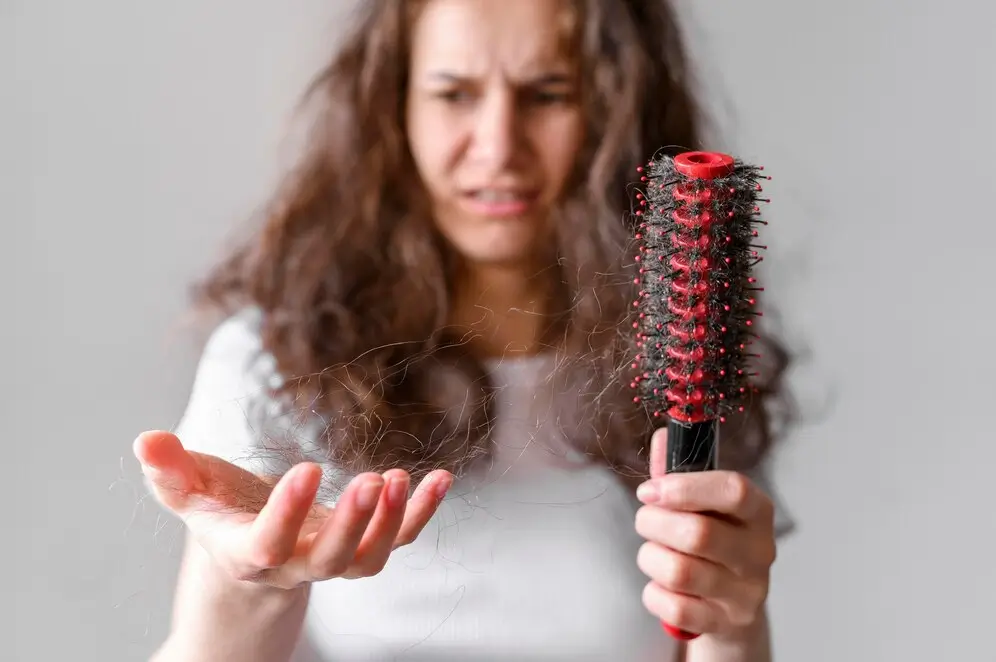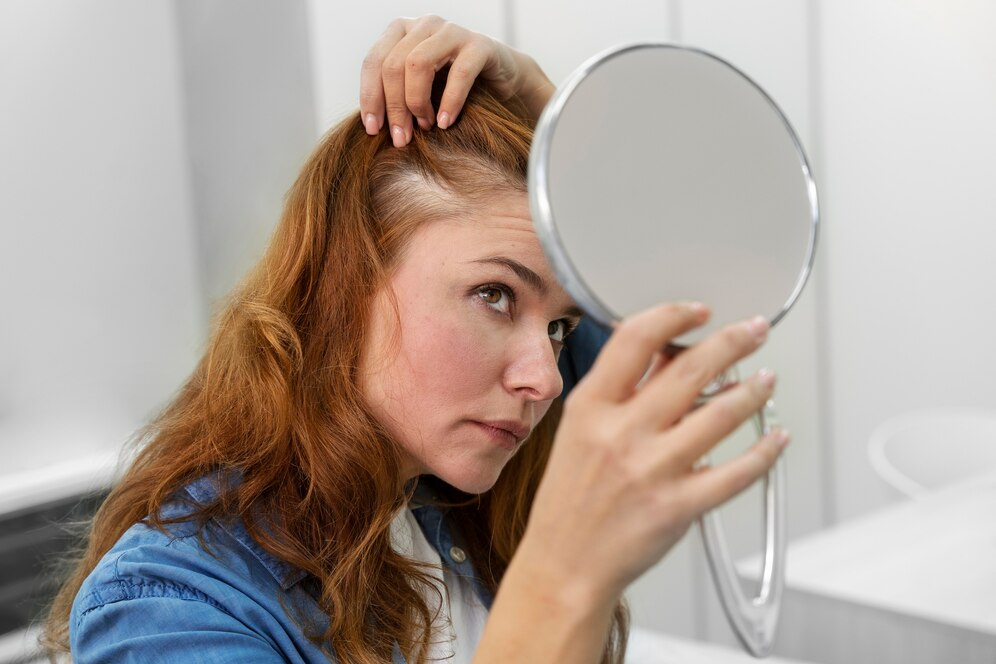Unlocking The Mystery Of Hair Loss In Women: Your Comprehensive Guide To Understanding And Addressing The Issue
Table of Contents
Have you noticed a thinning of your hair? Or are you noticing hairs coming loose in the shower? Contrary to popular belief, hair loss in women is a common thing. Up to 40% of Americans who suffer from hair loss are women, according to the American Hair Loss Association.
The first thing you must do is identify the root cause. Here, we will discuss the root causes of hair loss in females, the common types of hair loss, and treatment options. So, let’s start:
What are the cycles of hair growth?
The average hair loss in women is between fifty and one hundred hair strands daily. It is an inherent aspect of the hair cycle. While some hairs grow, others fall out. The active growth phase during which new hairs emerge from their follicles is known as the anagen phase. The hair then resumes growing while the root progressively separates from the follicle. Finally, the hair stops growing during the telogen period and eventually sheds.
What is hair loss in women?
Hair loss in women can be an upsetting issue. Female pattern hair loss is still less common than male, but if you are experiencing it, know that you are not alone. Many women, both over fifty and under, suffer from severe hair loss, which escalates drastically around menopause.
What are the types of hair loss?
- Anagen effluvium
Anagen effluvium is the loss of hair that occurs during the anagen or development phase of the hair cycle. This condition is caused by a severe injury to the hair follicles, which results in the abrupt loss of fundamentally damaged hairs and a degraded hair texture.
- Telogen effluvium
This refers to prominent shedding from the head in its entirety. We usually shed about 100 hairs each day, but occasionally, stress, disease, medication, or hormones can cause shedding to speed. Usually, hair regrows in six months.
- Androgenetic alopecia/female pattern alopecia/female pattern hair loss (FPHL)/baldness
Hair generally disappears in the frontal area, right behind the hairline, but remains dense in the back in women. An enzyme converts testosterone to dihydrotestosterone (DHT), forcing hair follicles to generate thinner hair until they discontinue.
Symptoms of Hair Loss in Women
The following are the first signs of hair thinning in females:
- Widening of the hair partings
- Thinning at the temples
- Increased scalp exposure along the crown of your hair
- Slowing down your usual hair growth. This is the reason why many ask why my hair is not growing.
Hair decrease in volume can occur on its own or in conjunction with excessive hair shedding (telogen effluvium).
Causes of Hair Loss in Women
There are different underlying causes of hair loss, including:
- Genetics: In addition to causing male-pattern baldness, hereditary hair loss can also result in female-pattern baldness. Genetic hair loss can affect people of any gender. By slowing down hair loss, finasteride or minoxidil can help prevent genetic hair loss in women.
- Improper Diet: As vitamins and minerals are essential to the cycle of hair growth, a significant deficiency in these elements can cause the weakening of the hair, which in turn can result in breaking.
- Hormonal Imbalance: Although females experience hormonal changes every month, it is at its peak during and after childbirth and menopause. This hormonal imbalance might result in severe hair loss in women.
- Medications: Hair loss in women can be caused by calcium blockers, anti-inflammatory tablets, oral contraceptives, depression medications, and blood thinners.
The Role of Hormones in Hair Loss
Like male pattern baldness, hormones play a crucial role in hair loss in women, especially those involving dihydrotestosterone, or DHT. DHT can bind to hair follicle receptors, causing the follicles to shrink. The follicles become smaller and less able to sustain hair development, which throws off the hair cycle and increases the likelihood of hair loss.
How Is Female Hair Loss Treated?
The type of hair loss determines treatment options for hair loss in women. There are several hair loss treatments available, with varying degrees of success. Minoxidil is the most beneficial for female users. This is a direct application of foam or lotion to the scalp.
It can be used to treat bald patches brought on by alopecia areata. However, it is permitted for use only in females with female-pattern baldness. Additional therapies for hair loss consist of immunotherapy, dithranol cream, corticosteroids, and hair loss surgery.
FAQ’s
- Can female hair loss grow back?
If the cause of hair loss is hormonal, it may grow back with time, but if it is genetics or female pattern baldness, it won’t grow back without medical treatment.
- Which vitamin lack causes hair fall?
Inquisitive about which vitamin deficiency causes hair loss? Deficiency in riboflavin, vitamin B12, and biotin may result in hair fall.
- How can I increase my biotin level?
Eating biotin-rich food like egg yolks, mushrooms, legumes, etc increases the biotin levels in your body.
- Does vitamin D regrow hair?
Yes, a sufficient amount of vitamin D can aid in the development of new hair follicles to promote regular hair growth.
Takeaway
Although hair loss in women is prevalent, there are treatments available. There are numerous preventative measures you may take to reduce hair loss, and if those fail as well, you can try the effective hair loss treatments for women mentioned above.

